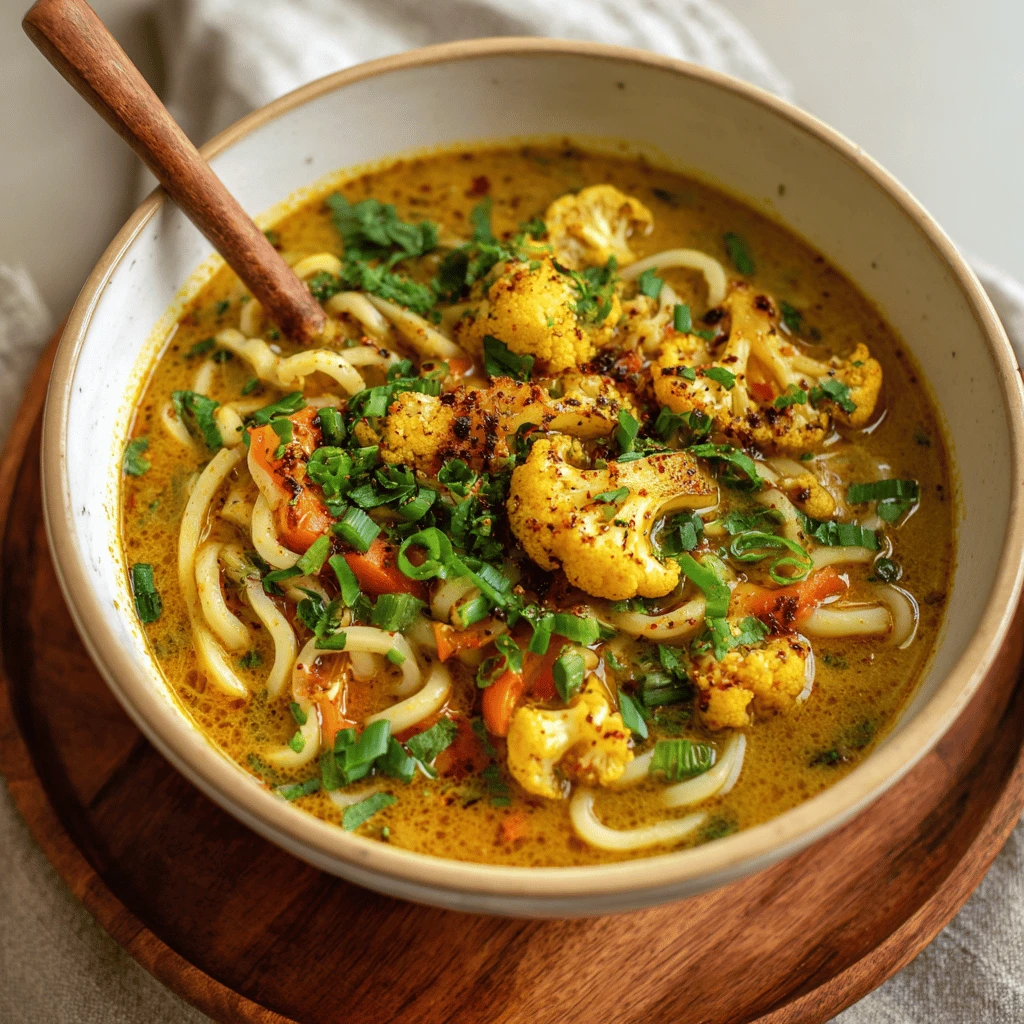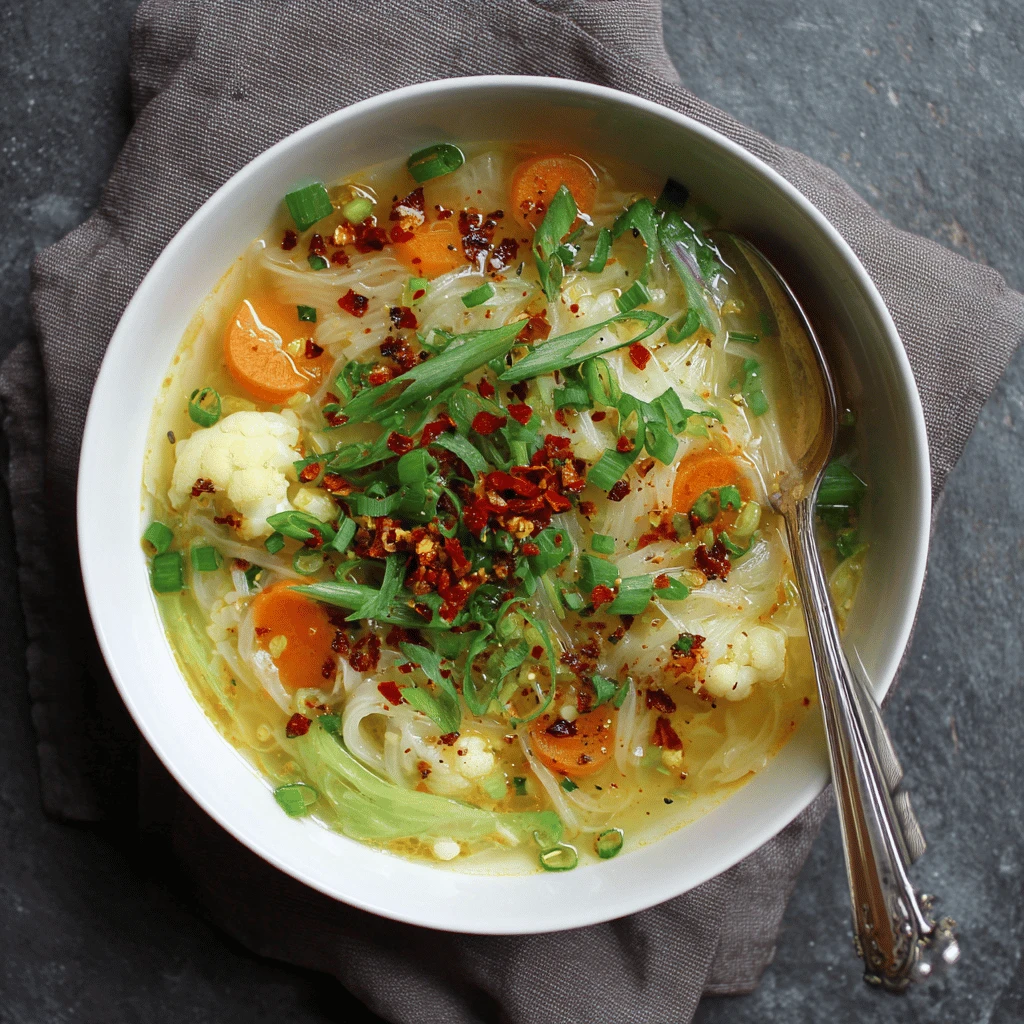Low Carb Cauliflower Noodle Soup
Craving a warm, comforting bowl of noodle soup without the carb overload? Look no further than this delicious and satisfying low-carb cauliflower noodle soup! Packed with flavor, nutrients, and that familiar noodle-y texture, this soup is a perfect way to enjoy a classic favorite while staying true to your dietary goals.
The Magic of Cauliflower Noodles
Forget traditional wheat noodles! Cauliflower rice, when prepared correctly, mimics the texture of thin noodles surprisingly well. It soaks up all the savory broth and seasonings, providing a delightful bite without the blood sugar spike.
Why Cauliflower Noodles are a Great Choice:
- Low in Carbs: A fraction of the carbohydrates found in traditional pasta.
- Nutrient-Rich: Cauliflower is packed with vitamins, minerals, and antioxidants.
- Versatile: It takes on the flavors of whatever you cook it with.
- Readily Available: Easily found in most grocery stores, fresh or frozen.
- Easy to Prepare: Quick and simple to cook.
While you can use a spiralizer to create longer “noodles” from a head of cauliflower, using pre-riced cauliflower offers convenience and consistency.
Crafting the Perfect Low-Carb Broth
The foundation of any great soup is its broth. For this low-carb version, we’ll aim for a rich, flavorful broth that complements the delicate cauliflower noodles.
Broth Options:
- Chicken Broth: A classic choice that adds depth and richness. Opt for low-sodium or homemade broth to control the salt content.
- Vegetable Broth: A lighter option for a vegetarian or vegan version. Look for a broth with a robust flavor profile.
- Bone Broth: Packed with collagen and nutrients, bone broth adds a savory umami flavor.
Enhancing the Broth:
- Aromatics: Sautéing onions, garlic, and celery in olive oil or butter before adding the broth creates a flavorful base.
- Herbs and Spices: Bay leaves, thyme, rosemary, parsley, and peppercorns add complexity and depth.
- Umami Boosters: A splash of soy sauce (or tamari for gluten-free), Worcestershire sauce (check label for sugar content), or fish sauce adds a savory depth.
- Acidity: A squeeze of lemon juice or a splash of apple cider vinegar brightens the flavors and adds a touch of tang.
Experiment with different combinations to find your perfect broth profile!
Adding Protein and Vegetables
To make this soup a complete and satisfying meal, let’s add some protein and vegetables.
Protein Options:
- Shredded Chicken: A classic and easy addition. Use leftover cooked chicken or poach chicken breasts specifically for the soup.
- Cooked Shrimp: Adds a delicate seafood flavor. Be careful not to overcook the shrimp.
- Ground Sausage: Adds a savory and slightly spicy element. Brown the sausage before adding it to the soup.
- Tofu (for vegetarian/vegan): Use firm or extra-firm tofu, pressed to remove excess water and cubed. Pan-fry or bake the tofu before adding it to the soup to give it a firmer texture.
Vegetable Additions:
- Carrots: Adds sweetness and color. Slice or dice them thinly.
- Celery: Adds a subtle celery flavor and crunch.
- Mushrooms: Adds an earthy umami flavor.
- Spinach or Kale: Adds a boost of nutrients and color. Add towards the end of cooking so they don’t overcook.
- Bell Peppers: Adds a vibrant color and sweetness.
- Zucchini: Adds a mild flavor and texture.
Feel free to mix and match your favorite protein and vegetables to create a customized soup that suits your taste.
Cooking the Cauliflower Noodle Soup
Now that we have our broth, protein, and vegetables ready, let’s put it all together!
Instructions:
1. Sauté Aromatics (Optional): In a large pot or Dutch oven, heat olive oil or butter over medium heat. Add chopped onions, garlic, and celery and sauté until softened, about 5-7 minutes.
2. Add Broth and Seasonings: Pour in the broth of your choice and add bay leaves, thyme, rosemary, peppercorns, and any other desired seasonings. Bring to a simmer.
3. Add Protein and Vegetables: Add your chosen protein and vegetables to the simmering broth. Cook until the vegetables are tender and the protein is cooked through. Adjust cooking time accordingly.
4. Add Cauliflower Rice: Stir in the cauliflower rice and cook until tender-crisp, about 5-7 minutes. Be careful not to overcook the cauliflower, as it can become mushy.
5. Adjust Seasoning: Taste and adjust seasoning as needed. Add salt, pepper, soy sauce (or tamari), Worcestershire sauce, or lemon juice to taste.
6. Garnish and Serve: Ladle the soup into bowls and garnish with fresh parsley, green onions, or a drizzle of olive oil.
Tips for Success:
- Don’t Overcook the Cauliflower: This is the key to maintaining a noodle-like texture.
- Use High-Quality Broth: A good broth is essential for a flavorful soup.
- Season Generously: Don’t be afraid to add plenty of herbs, spices, and seasonings.
- Adjust the Consistency: If the soup is too thick, add more broth. If it’s too thin, simmer it uncovered to reduce the liquid.
- Make it Ahead: This soup can be made ahead of time and stored in the refrigerator for up to 3 days. The flavors will meld together even more over time.
Variations and Customizations
This low-carb cauliflower noodle soup is a blank canvas for your culinary creativity! Here are some ideas to get you started:
- Spicy Soup: Add a pinch of red pepper flakes or a dash of hot sauce to the broth.
- Creamy Soup: Stir in a splash of heavy cream or coconut milk at the end for a richer, creamier texture.
- Italian-Inspired: Add Italian seasoning, diced tomatoes, and Parmesan cheese.
- Asian-Inspired: Add ginger, garlic, soy sauce, and sesame oil.
- Mexican-Inspired: Add cumin, chili powder, black beans, and corn.
- Add Eggs: Crack an egg into the simmering soup a few minutes before serving for added protein and richness.
Keto Considerations:
To ensure this soup is keto-friendly, pay close attention to the ingredients you use. Choose low-carb vegetables and protein sources, and avoid adding any ingredients that are high in carbohydrates, such as cornstarch or flour as a thickener. Using full fat dairy is also important.
Frequently Asked Questions (FAQs)
Q: Can I use frozen cauliflower rice?
A: Yes, frozen cauliflower rice works perfectly well. There is no need to thaw the cauliflower rice. Just be sure to cook it until tender-crisp.
Q: Can I freeze this soup?
A: Yes, you can freeze this soup, but the texture of the cauliflower rice may change slightly upon thawing. It is recommended to undercook the cauliflower if freezing to prevent mushiness after thawing.
Q: Is this soup vegetarian or vegan?
A: This soup can be made vegetarian or vegan by using vegetable broth and plant-based protein sources like tofu or tempeh. Ensure all other ingredients are also plant-based.
Q: How long does this soup last in the refrigerator?
A: This soup will last for up to 3 days in the refrigerator.
Q: How do I make the soup thicker?
A: You can thicken the soup by simmering it uncovered to reduce the liquid or by adding a small amount of cream cheese (keto friendly) or xanthan gum (use sparingly!).




